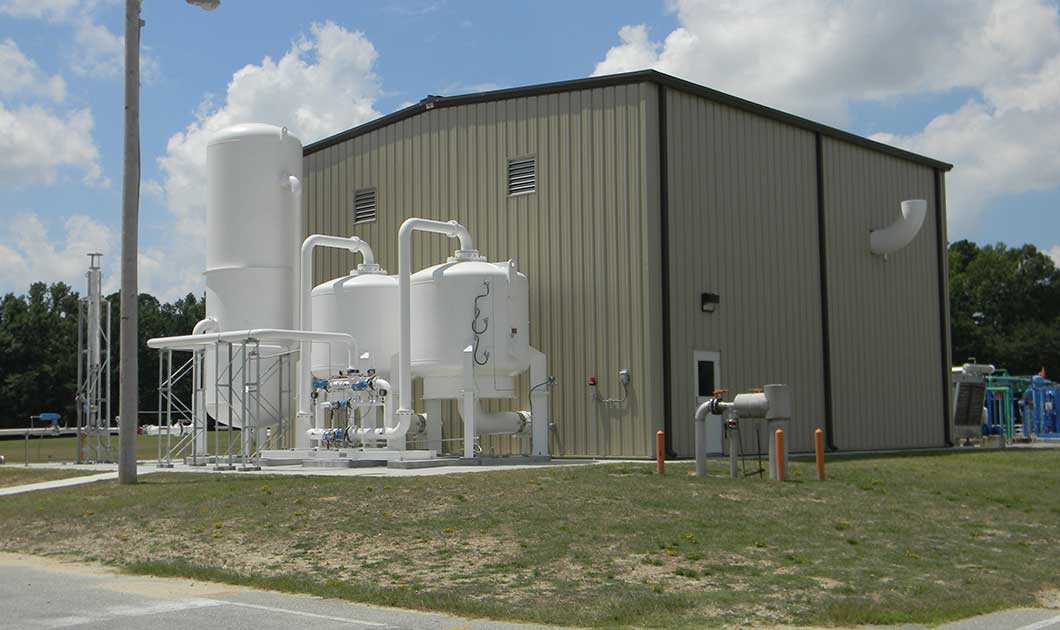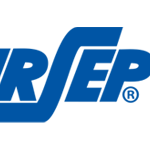
AirSep explains how its oxygen and nitrogen generators can free users from relying on large gas companies
Buffalo, NY, August 1, 2019 – Air contains approximately 21% oxygen, 78% nitrogen, .9% argon, and .1% other gases. AirSep Oxygen Systems separate this small percentage of oxygen from compressed air through a unique non-cryogenic process. Both the PSA and VPSA processes use molecular sieve (a synthetic zeolite), which attracts (adsorbs) nitrogen from air at high pressure and releases (desorbs) it at low pressure.
AirSep Oxygen Concentrators, Generators, and Oxygen Plants use at least two vessels filled with molecular sieve as adsorbers. As compressed or pressurized air passes through one of the adsorbers, the molecular sieve adsorbs the nitrogen. This allows the remaining oxygen to pass through and exit the adsorber as a product gas. Before the adsorber becomes saturated with nitrogen, the inlet air flow switches to the next adsorber. The first adsorber is now regenerated by desorbing the nitrogen through depressurization back to the atmosphere, followed by an oxygen purge step. The complete cycle then repeats.
The Vacuum Pressure Swing Adsorption (VPSA) process further aids the regeneration or desorption step utilizing a vacuum blower.
AirSep Nitrogen Systems also use at least two vessels, however, they are filled with carbon molecular sieve. Just like oxygen systems, as compressed air passes through one of the adsorbers, the carbon molecular sieve adsorbs the nitrogen. This allows the separated nitrogen to pass through the upper outlet connection of the adsorber vessel, which is then stored in the nitrogen buffer tank. Before the adsorber becomes saturated with nitrogen and breakthrough occurs, both the inlet air and the nitrogen outlet valve close and the partially pressurized vessel equalizes with the second adsorber that is waiting to come online. This pre-charges the second adsorber, while the first adsorber is regenerated by a depressurization cycle step. The complete cycle is then repeated.
Under normal operating conditions, the molecular sieve and carbon molecular sieve (for both oxygen and nitrogen systems) is completely regenerated and will last indefinitely.
An improved HMI, 5.7” multi-color touchscreen operation interface is equipped with nitrogen standard generators and is optional on oxygen models AS-D+ through AS-P. The touchscreen provides a normal start-up system, monitors/controls the operation of the process valves, monitors signals coming from the pressure transducers, and provides an alarm system, as well as a fail-safe shutdown mode. This control panel also features diagnostic capabilities and Ethernet access for remote monitoring of process parameters. The various color screens are easy to follow as the user-friendly interface maintains a consistent template design. The following control and monitoring features are available for PSA oxygen and nitrogen systems:
- Data logging
- Remote monitoring capability
- Multi-level secured access for supervisory control
- Multi-language option
- Alarm and process parameter notifications via email
- Visual recommended service maintenance reminders
- Parameters displayed in metric or imperial units
- Real time trends of process parameters
- General maintenance guidelines
Every AirSep VPSA plant control system monitors and controls the operation of the process valves. In the event of a power or instrument air failure, or even a loss in product concentration, the control system will shutdown in fail-safe mode. The plant’s integrated hardware and software monitor critical plant parameters, as well as the performance of the feed and vacuum blowers, instrument air compressor, and oxygen compressor. The following control and monitoring features are available for VPSA oxygen systems:
- Designed in accordance with local and international standards
- User-friendly design
- Integrated hardware and software
- Viewable trends and pressure profiles
- Continuous data recording every 250 milliseconds
- Process optimization may be performed by the operator if needed
- Remote monitoring capability
- Multi-level secured access for supervisory control
- Multi-language option
- Alarm and process parameters notification via email
- Parameters displayed in metric or imperial units
AirSep Oxygen and Nitrogen Systems are installed all over the world, even in remote locations or in underdeveloped areas with little or no infrastructure. They are perfect for users who require oxygen or nitrogen at a constant flow and pressure, 24 hours a day, 7 days a week. An AirSep system makes its own oxygen or nitrogen on-demand.
AirSep systems can increase business efficiency and free users from depending on large gas companies, their price increases, long-term gas contracts, and bulk deliveries. It is far safer and more reliable to generate gas on-site and as it’s needed. In addition, it’s also possible to achieve savings in areas including logistics, handling, operations, and safety.
Benefits to an AirSep Oxygen or Nitrogen System:
- Produces oxygen or nitrogen from an independent compressed air source
- PLC process control
- Highest process efficiency and low operating cost
- Automatic and unattended operation
- Touch-screen control panel with maintenance-free, solid-state purity monitor, including alarm and shutdown capability
- Automatic and fail-safe backup options are available
- Easy to install and maintain
AirSep’s product offering can be used in a wide range of applications including, wastewater treatment, supplying medical oxygen to hospitals and medical facilities, aquaculture/fish farming, and food packaging.
An ASV27000 VPSA Oxygen Plant was installed at a wastewater treatment facility in Rocky Mount, NC.
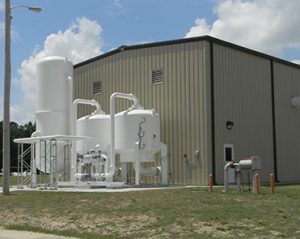
The facility originally was using a cryogenic system and with the AirSep VPSA system (non-cryogenic) has cut power costs by over 65%, as it runs more efficiently.
More than 4,100 hospitals, in nearly 50 countries worldwide, currently rely on AirSep PSA Medical Oxygen Systems to meet their central pipeline and other oxygen needs. These generators and plants operate automatically to supply patient, surgical, and critical care units in medical facilities, military field hospitals, on-site emergency preparedness centers, and disaster-relief efforts. An AS-Q2600HM Duplex PSA Medical Oxygen Plant installed in Nicaragua is one of the many examples that supply oxygen within a hospital.
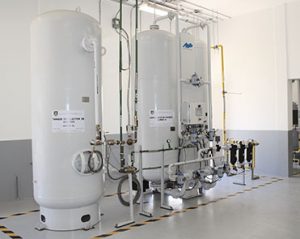
There is a floating pontoon barge in Chile that contains AS-P and AS-Q oxygen generators that are used to provide oxygen for salmon fish farming sea cages. Oxygen aids in increasing the productivity of the fish and improves their overall health. Having a sufficient level of oxygen in the water benefits the growth of fish and reduces the amount of bacteria.
A custom nitrogen PSA plant is installed in Adelaide, Australia at a large well-known snack manufacturer for food packaging. It displaces the oxygen content out of the packaging, replacing it with nitrogen gas. Nitrogen prevents spoilage and extends the shelf life of packaged foods.
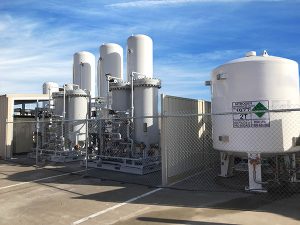
AirSep’s wide range of systems have secured AirSep as the undisputed leader in non-cryogenic on-site gas generation. Whether the application requires a self-contained generator, standard generator, packaged system, or a large plant, AirSep delivers innovative solutions for just about any nitrogen or oxygen generation requirement.

